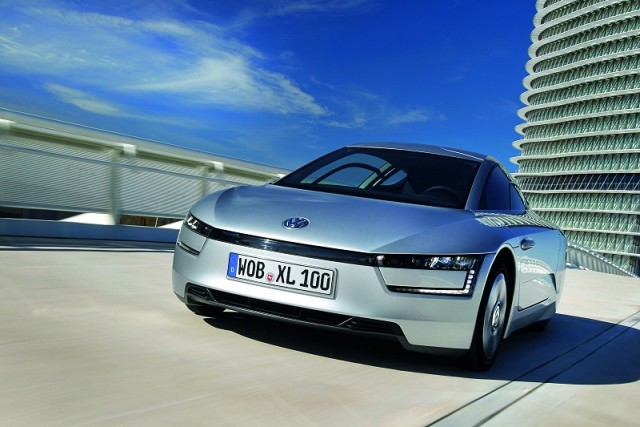Volkswagen's production-ready XL1 is headed for the Geneva Motor Show. Ahead of its world debut, Volkswagen has given us more details on what is claimed to be the most fuel-efficient production car in the world.
Exterior
The XL1 is certainly a unique thing to behold. Dimensionally, it's similar in length and width to a Polo, but rides lower than a Porsche Boxster. The XL1 has also been designed with perfect aerodynamic efficiency in mind. The rear wheel covers are there to prevent air turbulence, while spoilers in front and behind the wheels create cleaner air flow. From above, the XL1 is said to resemble a dolphin, as the front of the car is substantially wider than the rear. The doors open in a similar way to those found on a Mercedes-Benz SLR; hinged both from the roof and A-pillars.
Technology is also in abundance on the outside, as integrated rear-view cameras (known as e-Mirrors) replace traditional door mirrors and energy-efficient LED lighting can be found both at the front and the back. All these efforts have paid off however, as the XL1 weighs in at a tiny 795kg - and achieves a very impressive 0.189 drag coefficient figure.
Interior
In contrast to the tandem-seating arrangement found in the original XL1 concept, the production version has two seats that sit side-by-side, albeit slightly staggered. These seats are bespoke for the XL1 and unpainted carbon-fibre can be seen on the door sills. Standard, high-quality Volkswagen switchgear is expected to be found on the dashboard with additional dials added for battery-life, consumption and efficiency figures.
Mechanicals
Under the bonnet you'll find a 0.8-litre, two-cylinder TDI engine connected to a 20kW electric motor and a seven-speed DSG automatic gearbox. In this state the XL1 achieves a record-breaking fuel consumption figure of 0.9 litres/100km - equating to around 313mpg - and emits just 21g/km of CO2.
The mind-boggling stats don't stop there either. Due to its minimal kerb weight and aerodynamics, the XL1 needs just over 8hp to travel at 100km/h, which it can reach from a standstill in 12.4 seconds. The XL1 can also travel 80 kilometres on the electric motor alone, which recharges on the move thanks to energy regeneration under braking. The diesel engine is derived from Volkswagen's most efficient 1.6-litre four-cylinder TDI unit.
Anything else?
The launch of the XL1 is sure to start a new way of thinking for ultra-efficient cars. No doubt the price of the XL1 will be fairly high - and we'll be sure to tell you what it's like when we get our hands on one.

